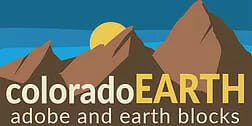FAQ
We realize there are many more questions and answers that are listed here. And fortunately there are many resources of information. Visit the links below to find the type of information you are seeking.
Thermal Mass and Insulation:
Earthen Floors:
Earthen Walls in a variety of climates:
Appropriate mixes for earthen blocks:
“Earth walls give a living environment like no other building material. It’s difficult to explain in words because the effect is a subtle feeling you get by being in them; serene, warm, solid, less noise, healthier, secure.”
Owner of an earthen home
